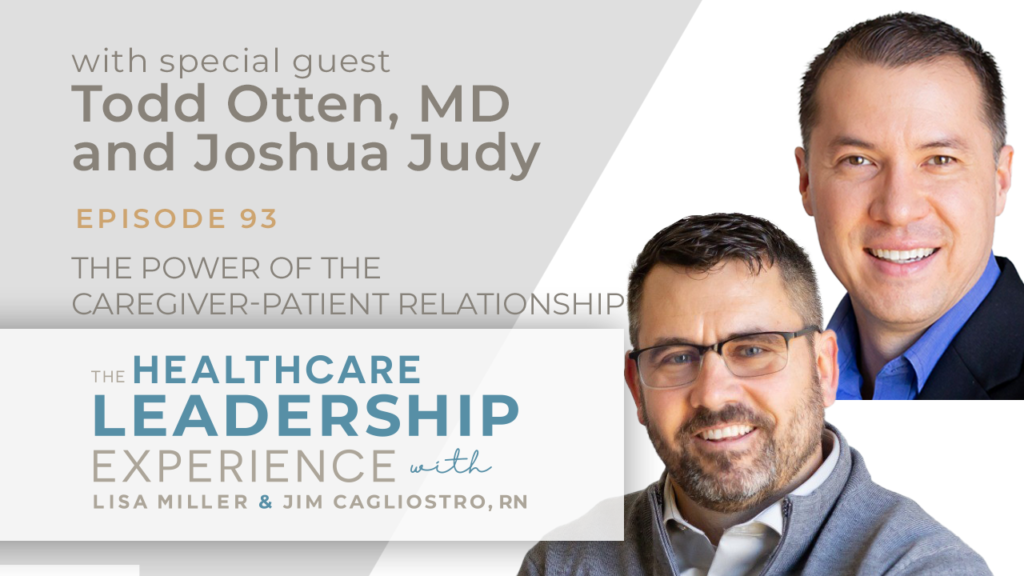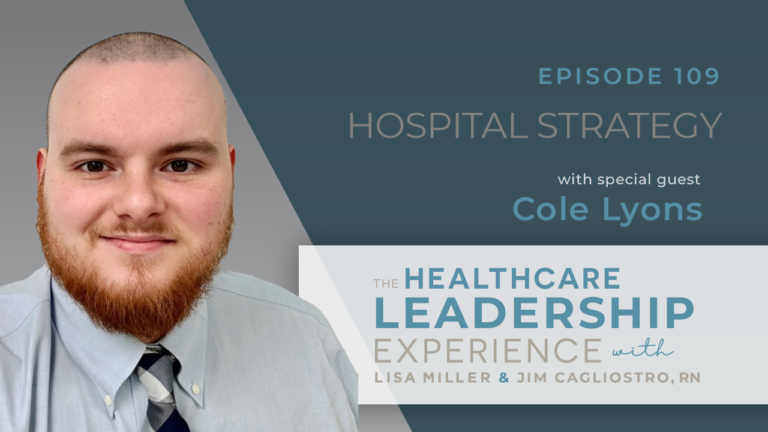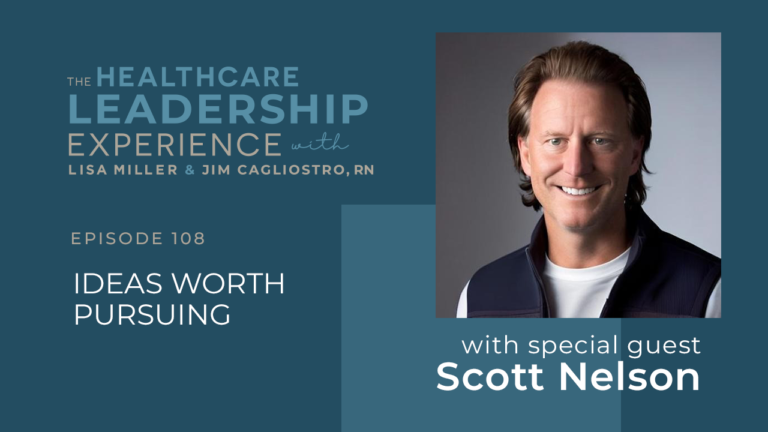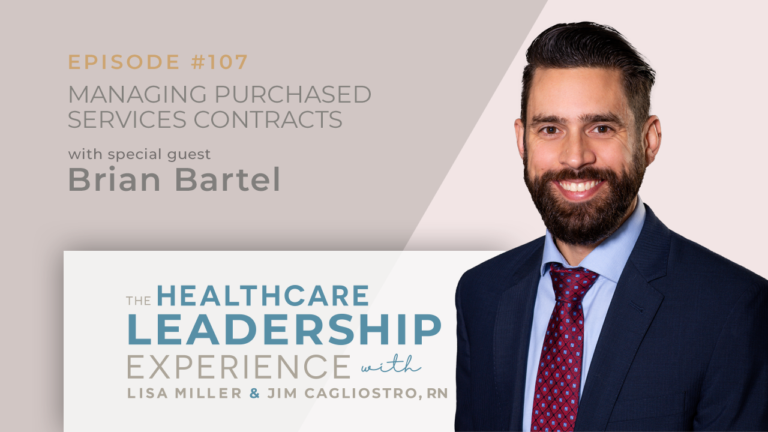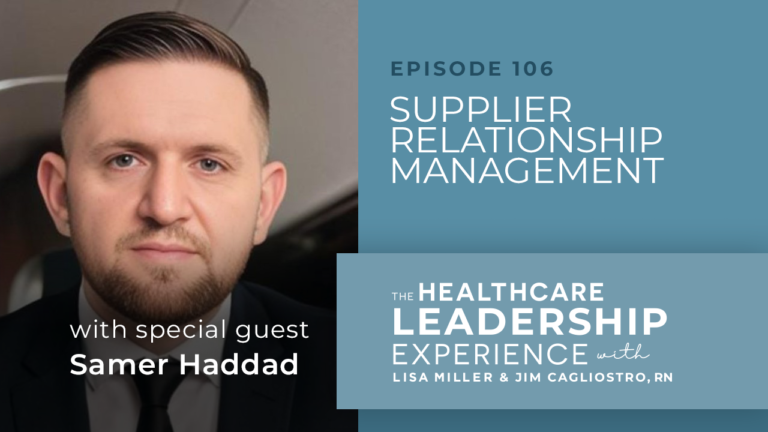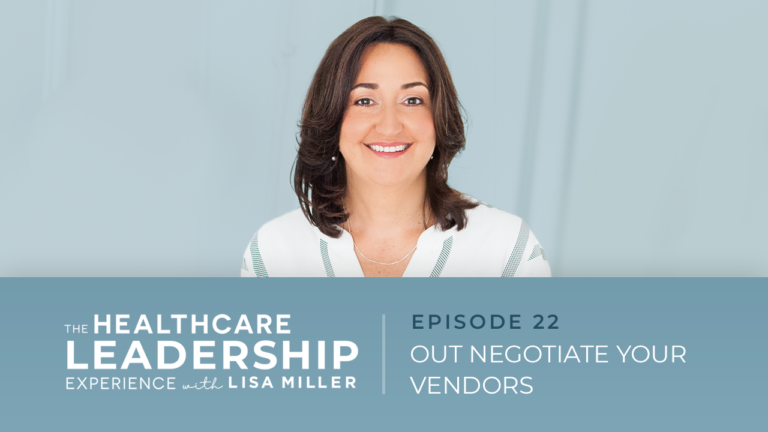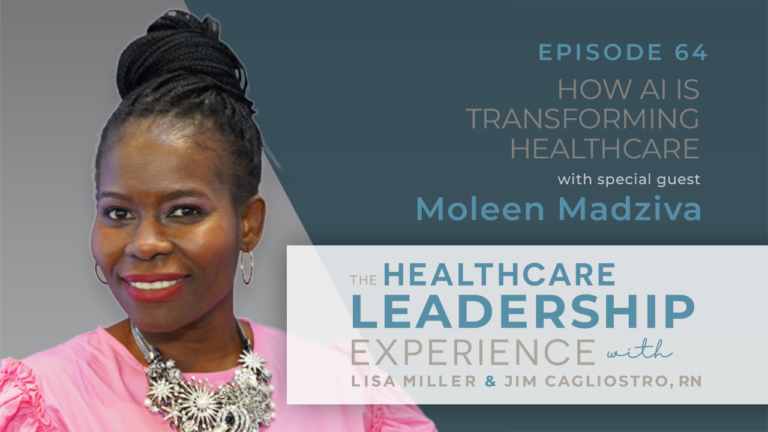Episode Introduction
In a wide-ranging conversation, Todd and Joshua share their transformative patient-doctor journey, the most important component of the quadruple aim, and why healthcare providers need to ‘’put the keyboard down.’’ They also emphasize that telehealth isn’t a ‘’one size fits all’’ solution, explain that it’s OK to be vulnerable, and encourage doctors to offer hope, even when they don’t have the answer.
Show Topics
- We sorely need to talk about American healthcare
- Four components of the quadruple aim
- Three stories about patient-provider relationships
- The need for leadership at the highest level
- How to rebuild patient trust
- The positive impact of telemedicine
01:59 We sorely need to talk about American healthcare
Josh outlined the motivation behind Ripple of Change.
‘’For us, I would say it was really born out of a mutual frustration with our experiences. First, as individuals, me as a patient and Todd as, my family physician. And over time, you know, as this project got off the ground, we realized, there’s really a collective frustration. And we realized our feeling was that not only did we deserve better, but everyone that’s a participant in the health care space, whether it’s a nurse, a staff, or all the other patients out there. And there’s just too many not getting quality care that they deserve in a way that they can afford. People are feeling powerless, so we wanted to give that a voice, as well as tell our story and help others. It takes months to see your family doctor, and that shouldn’t be the case.’’
04:21 Four components of the quadruple aim
Todd explained why the fourth component of the quadruple aim matters.
‘’I was an early adopter of that vernacular probably, I guess, 7 or 8 years ago, almost right when it came out from Dr Sinski and Dr Bodenheimer. But it just seemed brilliant to me. You want the best for the patient experience. You want quality care. You want lower or reasonable costs. But that 4th component is so important, that’s provider well-being. Over the years, Joshua saw me at my best, And he saw me at my worst. And, you know, that’s brought out in the book, and we don’t want patients getting the worst from their doctors or their providers or their clinicians. But we also felt like that it needed to be not just my idea or Joshua’s idea, but anybody can take these simple principles and run with them and make them their own. Change the verbiage a little bit. Right? Like, some people don’t like the word provider. Fine. So be it. Change the word. Use clinician. Use health care associate. Use human being.’’
07:11 3 stories about patient-provider relationships
Josh said patients appreciate uninterrupted listening from their healthcare provider.
‘’Story number 1 handles my hormone treatments. It’s through telemedicine. But, he approaches each visit the same way. He goes over the blood results, and then he turns to me and he says, the floor is yours. And he never cuts me off or tries to subordinate. And even if the treatment plan doesn’t end up changing during the visit, I already feel better. So it’s interesting because it’s a cash practice without the obstacle of insurance. Right? So that that gives a totally different dynamic. And so the time is there. And it’s not a competition to win a debate. It’s really a competition to heal. And that’s story number 2. I recall times my wife would come home after a hard day at work, and, she’d start telling me of her challenges from the day and only for me to immediately pounce and try to problem solve her issues. But that’s not what she was looking for. She just wanted me not to sideline her and prove how smart I was at fixing these things. Purely listening proved enough for her. And number 3 is about an endocrinologist I saw before the doctor I described in story number 1, and he practiced with taking insurance. Each visit started the same way there. Most of the 20 minute visits were his retelling of the anatomy of the pituitary gland and how it sits in the head, so it was a competition for time. Each story shows the same thing. People simply appreciate that uninterrupted listening.’’
10:46 The need for leadership at the highest level
Todd said change is possible with a culture shift.
‘’And it I think the good thing, though, is I think it’s possible. There are a lot of examples out there of good things happening, but the culture has to shift that way. People have to buy in. There needs to be the right type of leadership at the highest levels. Unfortunately, Joshua got to experience some of this in the most recent office I worked in where we called it the office utopia. There were all those pressures there and there were the time tranches too. But it wasn’t the same, and we didn’t treat it that way. And we didn’t treat it like people were widgets going through an assembly line.’’
11:55 How to rebuild patient trust
Todd reinforced the need for healthcare providers to listen to their patients.
‘’I would echo what Joshua said in terms of listening. Frankly put your keyboard down, look the person in the eye, shut up, and listen. Don’t have preconceived notions about what the diagnosis is because you might be wrong if you’ve already made it in 15 to 20 seconds. There might be some nugget of detail in there that is invaluable. I learned quickly on in my career that if you asked a couple questions and just sat there and listened to the person in front of you, they would usually tell you what the diagnosis this was. That would be my number one piece of advice. Joshua’s case was very complicated…. near the end of our time together as physician and patient, the majority of what I did was listening, counseling and alternative methods. We wrote a book together, and that was one of the treatment protocols, and we’re both better off for it.’’
19:11 The positive impact of telemedicine
Josh said telemedicine isn’t ‘’one size fits all’’ but a helpful tool in patient care.
‘’My wife who has epilepsy, she’s actually never met her current neurologist, she sees her through telemedicine, and it works really well. They’ve been able to establish a great rapport and they end up talking about the book sometimes. It’s just been a really great thing. You can’t really approach it with one size fits all. It’s another tool on the tool bag. People should embrace it if they feel comfortable. I think things are moving in that direction. You know, so much of Ripple Change is not about leaving people behind. It’s kind of about meeting them where they’re at. Some folks are tech savvy, some aren’t. But I see it as an overall positive thing.’’
Show Links
Connect with Lisa Miller on LinkedIn
Connect with Jim Cagliostro on LinkedIn
Connect with Dr Todd R Otten on LinkedIn
Connect with Joshua J Judy on LinkedIn
Check out VIE Healthcare and SpendMend
You’ll also hear:
Why driving change in healthcare needs a collective voice to succeed. ‘’It has to be a large number of individuals to break down those silos. Ultimately, we’re probably talking about pretty significant policy change.’’
How capitalism has failed the American healthcare consumer: ‘’The mantra of profits over people has condensed the visits and put the priorities in all the wrong places. How do you get a good experience when you’re afforded literally 7 or 8 minutes to go in and talk to somebody? … It has to change.’’
It’s OK for healthcare providers to say ‘’I don’t know’’: ‘’If you don’t have the answer… you can offer some hope, or at least try and get somebody to the right direction.’’
The benefits of a strong doctor-patient relationship: ‘’If you do it right first time you might avoid those repeat visits and all those referrals that increase cost…. and with that good relationship you share in the treatment plan.’’
Why it’s OK to be vulnerable as a patient: ‘’It’s okay to fall down and be vulnerable, but it’s what you do to get back up that matters.’’
What To Do Next:
- Subscribe to The Economics of Healthcare and receive a special report on 15 Effective Cost Savings Strategies.
- There are three ways to work with VIE Healthcare:
- Benchmark a vendor contract – either an existing contract or a new agreement.
- We can support your team with their cost savings initiatives to add resources and expertise. We set a bold cost savings goal and work together to achieve it.
- VIE can perform a cost savings opportunity assessment. We dig deep into all of your spend and uncover unique areas of cost savings.
- If you are interested in learning more, the quickest way to get your questions answered is to speak with Lisa Miller at lmiller@spendmend.com or directly at 732-319-5700
Episode Transcript
DOWNLOAD THE FULL PDF TRANSCRIPT HERE
CLICK HERE TO OPEN THE FULL TRANSCRIPT
Joshua [00:00:00]:
People simply appreciate that uninterrupted listening. Sadly, the current health care system with all the obstacles that’s not afforded because time is money and the system’s based to maximize profit in, you know, too few hands and not for the greater good.
Todd [00:00:17]:
Frankly, capitalism has failed the American health care consumer to a large degree. The mantra of profits over people has condensed the visits and put the priorities in all the wrong places.
Introduction [00:00:29]:
Welcome to the Healthcare Leadership Experience Podcast, hosted by Lisa Miller and Jim Cagliostro.
Lisa is the founder of VIE Healthcare Consulting and now Managing Director at SpendMend. Lisa and her team has generated over $1 billion in financial improvements for VIE’s clients since 1999.
Since 2007, Jim has been a registered nurse working in critical care, perioperative services and outpatient settings at nationally recognized medical facilities across three states.
You’ll hear conversations on relevant and trending topics in healthcare and much more. Now, here’s your hosts, Lisa and Jim.
Jim [00:01:08]:
Hi. This is Jim Cagliostro, and you’re listening to The Healthcare Leadership Experience. Today’s guests are Joshua Judy and Todd Otten, co-authors of Ripple of Change, a book that directly addresses many of the dysfunctions that patients and caregivers are seeing and experiencing today in our health systems.
Today, I’d like to narrow in on the importance of the physician-patient relationship. Welcome, and thank you both for joining us today.
Todd [00:01:36]:
Thank you, Jim. Appreciate it. Pleasure to be here.
Jim [00:01:39]:
So “Ripple of Change”. So it was published this year. Obviously, you’ve been writing it and published it this year, and it addresses much of the dysfunction in health care today. According to the book, your desire is to launch a sorely needed discussion on today’s health care system. In both of your opinions, why is the discussion so sorely needed?
Joshua [00:01:59]:
Wonderful question, Jim. So, I can kick things off. And then, Dr. Todd, please feel free to jump in. But for us, I would say it was really born on a mutual frustration with our experiences. First, as individuals, you know, me as a patient and Todd as, my family physician. And over time, you know, as this project got off the ground, we realized, there’s really a collective frustration. And we realized, you know, our feeling was that not only did we deserve better, but everyone that’s a participant in the health care space, whether it’s a nurse, a staff, or all the other patients out there. And there’s just too many not getting quality care that they deserve in a way that they can afford.
Joshua [00:02:47]:
And people are feeling, you know, powerless. So we wanted to give that a voice, as well as tell our story and help others. Just thinking of through that, it takes months to see your family doctor, and that shouldn’t be the case.
Todd [00:03:01]:
Yeah. And to piggyback on that, you know, in in the past Handful of months, what I’m seeing is there there’s there are a lot of wonderful efforts out there to try and move things in a positive direction. And one of the keys that I feel is gonna be our collective voice. It can’t be just onesie twosies here and there. It has to be a large number of individuals to break down those silos. And, ultimately, we’re probably talking about pretty significant policy change. And to do that, it’s gonna take the collective, hence the discussion of this. We wanna inspire and empower really a multitude of people.
Jim [00:03:35]:
I love it. And what you said… well, Joshua, you said about mutual frustration. Todd, you mentioned the collective voice. That’s one thing that stood out to me right away when I saw a ripple of change, when I heard about it. The fact that this is written from the perspective of provider and patient. And that’s something that as a nurse for 15 plus years and as a patient for many years, it’s something that really spoke to me. I just love the approach of the book. This was one of those I should have said this upfront.
Jim [00:04:03]:
This is one of those episodes I was really looking forward to. I wish we could do it sooner, But I’m excited to hear, again, from both of your perspectives. I guess I’d like to learn a little bit more about, I said, your quadruple aim, but I know in the book you make it clear it’s our quadruple aim. How does it address the current dysfunction today?
Todd [00:04:21]:
I’ll jump in on this one first because, you know, the quadruple aim is. So I was an early adopter of that vernacular probably, I guess, 7 or 8 years ago, almost right when it came out from Dr. Sinski and Doctor Bodenheim, Bodenheimer rather. But it just seemed brilliant to me. Right? Like, you got the patient. You want the best of the patient, so patient experience. You want quality care. You want lower or reasonable cost. But that 4th component is so important, provider well-being. You know? And over the years, Joshua saw me at my best. And he saw me at my worst.
Todd [00:04:55]:
And, you know, that’s brought out in the book, and we don’t want patients getting the worst from their doctors or their providers or their clinicians. But we also felt like that it needed to be not just my, you know, idea or Joshua’s idea, but anybody can take these simple principles and run with them and make them their own. Change the verbiage a little bit. Right? Like, some people don’t like the word provider. Fine. So be it. Change the word. Use clinician.
Todd [00:05:24]:
Use, you know, health care associate. Use human being, for goodness sakes.
Jim [00:05:28]:
Sure.
Todd [00:05:29]:
You know? So that’s really how it came to be about with our and, frankly, in my opinion, it became even more powerful when Joshua got on board. It’s one thing to hear a doctor bitching about stuff, which we hear all the time. But to have the patient side of the same story, oh, man. I Can’t tell you how many times I was brought to tears either talking to Joshua or writing or editing. So, yeah, very powerful.
Jim [00:05:53]:
That’s great. Joshua, go ahead.
Joshua [00:05:56]:
Yeah. Beautifully said, Todd. I really can’t add a lot other than just to reflect on, yeah, the many tears shed and, of the healing that happened, and it was quite a cathartic process for us.
Jim [00:06:08]:
You both are really touching on something that I know when it comes to health care. And, yes, there’s the business side of it, but this really is — it gets personal. Mean, we’re talking about people’s lives. We’re talking about fathers, husbands, mothers, daughters, children, grandma, grandpa. Like, this is something that really it impacts people in a much deeper way than just the finances and the business side of it. So it’s so important that we stop to take the time to dig deeper. And so that kinda goes into my next question for you. And Josh will probably direct this towards you, but our listeners know that I’m very passionate about the patient experience.
Jim [00:06:42]:
I believe it’s chapter 22 in your book that that talks about that. So I skipped ahead to that. But it’s often neglected, or at least it’s lacking in so many hospitals and health systems around the country. So I want to, like I said at the beginning, focus on this aspect of the patient experience, specifically in terms of the doctor-patient relationship. Joshua, if you can, would you share with us, some of the common obstacles that this relationship faces in the American health care system today.
Joshua [00:07:11]:
Sure. I’d be happy to, Jim. And I’ll do that by sharing 3 quick stories to illustrate healthy relationships and, obstacles. So story number #1. So I have a wonderful doctor. He handles my hormone treatments. It’s through telemedicine. But he approaches each visit the same way. He goes over the blood results, and then he turns to me, and he says, the floor is yours. And he never cuts me off or tries to subordinate.
Joshua [00:07:41]:
And even if the treatment plan doesn’t end up changing one iota during the visit, you know, I already feel better. So it’s interesting because it’s a cash practice without the obstacle of insurance. Right? So that that gives a totally different dynamic. And so the time is there. And what it’s not is it, you know, a competition to win a debate. It’s really a competition to heal. And that’s story number #2.
Joshua [00:08:07]:
I recall times my wife would come home after a hard day at work, and she’d start telling me of her challenges from the day and only for me to immediately pounce and try to problem-solve her issues. Right? That was just kinda my nature. I wanted to make her feel better.
Jim [00:08:22]:
Guilty. I’m guilty of that. We many of us are guilty of that, Joshua. Yeah.
Todd [00:08:26]:
That might be a Y chromosome thing.
Joshua [00:08:28]:
I think it’s gonna be. But, you know, that’s not what she was looking for. So she just wanted me not to sideline her and go about, you know, proving how smart I was at fixing these things from her day. So the time invested was purely listening proved enough for her. And then for #3, last but not least, is about an endocrinologist as to I saw before the doctor, I described in story number 1, and he practiced with taking insurance. So each visit started the same way there as well. Most of the 20-minute visits was his retelling of the anatomy of the pituitary gland and how it sits in the head. And in the waning minutes, I was told that this doctor had family members just like me, who apparently knew their bodies too well for his liking.
Joshua [00:09:16]:
So it was a competition for time and the obstacle self-erected. Right? So I guess I’ll just by saying this, each story shows the same thing. People simply appreciate that uninterrupted listening. And that means, you know, doctors from their CEOs or bosses or wives from their husband or vice versa and patients from their doctors. So you just really gotta afford the time and space. And, sadly, the current health care system with all the obstacles, that’s not afforded because time is money, and the system’s based to maximize profits in, you know, too few hands and not for the greater good.
Jim [00:09:55]:
That’s something I mean; you’re hitting close to home again on this point because that’s something that I’ve to my wife. Personally, I’ve seen doctors, you know, in other states, and you just feel like you don’t have enough time. You just don’t have enough time. And that’s a huge piece of the like you said, the obstacle. You kept saying that that that is the obstacle. There’s not enough time.
Todd [00:10:15]:
Well and to just add maybe two quick sentences onto that. I mean, that was so well said by Joshua. But frankly, capitalism has failed The American health care consumer to a large degree. It really has. You know. The mantra of profits over people has condensed the visits and put the priorities in all the wrong places. You know? And how do you get a good experience when you’re afforded literally 7 or 8 minutes go in and talk to somebody and try and sort all these things out? Yeah. So it’s it has to change.
Todd [00:10:46]:
And it I think the good thing, though, is I think it’s possible. And I think there’s a lot of examples out there of good things happening, but the culture has to shift that way. People have to buy-in. There needs to be the right type of leadership The highest levels. You know? And I think, unfortunately, Joshua got to experience some of this in the most recent office I worked in where we called it the office utopia. There was all those pressures there. But you know and there were the time tranches too. But it wasn’t the same, and we didn’t treat it that way.
Todd [00:11:14]:
And we didn’t treat it like people were widgets going through an assembly line, you know, assuming I wasn’t going through a lot of cluster headaches. That that might have been a little bit different, but Joshua said it very well.
Jim [00:11:26]:
And I believe this does get to a deeper issue that we talk about not enough time. We talk about the inability to listen, at least to listen enough, and it gets to the deeper issue of trust. There’s a lot of skepticism, doubt, fear, and I’d say distrust today from the side of at least, the patient and the health care consumer, how do providers help rebuild and maintain that trust? I guess I’ll direct this to you, Doctor Otten. How do providers rebuild that trust and keep that trust with their patients?
Todd [00:11:55]:
Yeah. I would echo probably, what Joshua said in terms of listening. You know, frankly, put your keyboard down, look the person in the eye, shut up, and listen. Don’t have preconceived notions about what the diagnoses is because you frankly, you might be wrong if you’ve already made it in 15 to 20 seconds. There might be some nugget of detail in there that is invaluable. You know, know, I learned quickly out of my career that if you asked a couple questions and just sat there and listened to the person in front of you, they would usually tell you what the diagnosis was. You know? So that would be my number one piece of advice. Now granted, like, Joshua’s case was very complicated, and I didn’t have the fixes for it.
Todd [00:12:36]:
And near the end of our time together as physician and patient or doctor patient, the majority of what I did was listening and counseling and alternative methods. I mean, my goodness. We wrote a book together, and that was one of the treatment protocols. And, frankly, we’re both better off for it. You know? So yeah.
Joshua [00:12:58]:
Yeah. Just to add to that, I didn’t make it easy for a diagnosis. I didn’t make it easy.
Todd [00:13:05]:
Well, I mean but, you know, Joshua, your stuff was tough, man. You know? And what broke my heart about the whole thing is I knew I was a big contributor to the problem with prescribing you the medicine that that, frankly, I only wanted to help. I didn’t anticipate the devastating consequences that it was gonna bring. But, yeah, but even then, you know, the empathy, the compassion, the love, if you don’t have the answer, even in that period, you can offer some hope, you know, or at least try and get somebody to the right direction as opposed to trying to check the boxes, put it in a simple diagnosis. It is okay to say, I don’t know, but I’m gonna do my best to try and get you to someone that does or can or will.
Jim [00:13:47]:
And that’s something I think as patients, just personally, where we want that partner, you know, that empathy and that compassion, and we don’t say, oh, well, this is just the diabetic or the heart failure patient or the patient with COPD, but this is a human. This is someone who has a job or a family or whatever other life struggles they’re dealing with, and my provider, the clinician I’m working with, is my partner to help me navigate through this. And what both of you said, I think have touched on that.
If you’re just tuning in, you’re listening to the Healthcare Leadership Experience, and I’m your host, Jim Cagliostro. This show is sponsored by VIE Healthcare Consulting, a SpendMend company, which provides leading edge financial and operational consulting for hospitals, health care institutions, and other providers of patient care.
Since 1999, VIE has been a recognized leader in health care costs, hospital purchased services, healthcare benchmarking, supply chain management and performance improvement. You can learn more about VIE Healthcare Consulting at vihealthcare.com.
So continuing on this focus of this doctor-patient relationship, Joshua, if I can ask you, how does that relationship impact a person’s overall health care experience And, really, their adherence to the treatment plan.
Joshua [00:15:00]:
Sure, Jim. Well, the long and the short of it is it really affects noncompliance right to the treatment plan, doctor shopping and I would say Doctor Google. Right? When you don’t have that strong doctor patient relationship, you know, you feel compelled to, you know, look elsewhere to feel better, which is not what you want. And I talk a bit about that in the book, you know, the guilt of going to doctor Gula at one point in in the journey, but that’s not really where I wanted to be. I wanted to be, you know, the graceful hands of, my family physician, Todd. And so that, you know, came full circle, obviously, through the healing process of, Ripple of Change, but that’s the long and short of it, Jim.
Jim [00:15:43]:
Well, listen. That’s huge. And how many times have any of us and our listeners been with a provider and said, because of the relationship I have with this provider, because I trust them, I want to do well. I I’ve been there. Well, I want to be that good patient, right? When I go to that follow-up appointment and say, yes. I’ve done everything that we planned together, and this is what’s happening, versus, I don’t really respect this person. I don’t trust this person. I’m gonna go off and do my own thing, and I might not even show up at the next appointment.
Jim [00:16:12]:
But having that that compliance is the end goal, but how do we get there? And that relationship is so important. So another aspect and you’ve kind of touched on this with the obstacles of insurance and cost and things like that. Cost is a major concern for patients and providers today. And this is so complex. We’re not gonna cover this in the few minutes we have. But how can the doctor-patient relationship help navigate these costs. How can maybe providers help navigate the costs that the patients are seeing? Or how can they work together to really address the issue of cost health care. Because I know that’s part of our quadruple aim.
Todd [00:16:48]:
Yeah. I’ll jump in on this one a little bit. You know, one of the things I used to say when I was seeing patients was that I saw it as a team game. Right? Like, there’s two of us on the team trying to get the one individual to a better place or performing as well as they could or feeling as well as they could. And what I see as a goal is the physician might be completely different from what the patient is seeing as a goal. You know, for example, end of life care. The standard is trying to get someone to live forever, if you will, I guess, because that’s impossible. The reality is they might wanna die in peace at home.
Todd [00:17:22]:
And if I’m ordering all these tests and doing all these things and putting them in the hospital, I am not we are not on the same page. Not even in the same ballpark, really.
Jim [00:17:30]:
Right.
Todd [00:17:31]:
That’s how I found really the best way to navigate some of the financial issues, and it wasn’t perfect for sure. But if we were at least going towards the same goal, it would help me make decisions about the number of tests to order, the frequency of medications. You know? The list goes on and on and on. But that’s part of listening and having a conversation and talking, you know, in the time constraints that we all, you know, live with or many of us live with if you’re not doing direct care, really constrain that. Joshua, do you wanna jump in on this too? I think you probably feel the same or similar.
Joshua [00:18:07]:
Oh, yeah. I do. And I think that was spot on in terms of what you said. So, you know, and I really think about this in terms of, first time quality, if you will. So if you do it right the first time, you might avoid those repeat visits and all those referrals out, right, which all that does is increase cost. Right, each additional touch point that you end up with that you maybe you could have avoided by having that strong doctor-patient relationship. And then, you know, with that good relationship you share in the treatment plan. So you’re really that team that Todd spoke to.
Jim [00:18:39]:
That’s great. And you guys are really hitting the main points, and I love that. And so I think we have time to touch on another aspect of the relationship between doctor and patient, and that’s technology and telemedicine. Joshua, you mentioned that one of the, you know, providers you see you see them strictly through telemedicine. Does that help? Obviously, we see that there’s obstacles and there’s barriers. Do you feel like That’s a tremendous opportunity that we’re just starting to see the beginning of, or is that something like, hey. We really shouldn’t go too quick, you know, too deep on this too fast. Any opinion from either of you on that?
Joshua [00:19:11]:
Yeah. I mean, I can chime in first, and then I’d love to hear what Todd thinks of this too. So beyond my own experience with telemedicine, which I find works very well for my situation. You know, you gotta be a little bit tech heavy. Right? So that that helps. My wife who has epilepsy, she’s actually never met her current neurologist, she sees, her third telemedicine, and it works really well. And they’ve been able to establish a great rapport, and they end up talking about the book sometimes, I think, in the last visit as well.
Jim [00:19:41]:
Nice.
Joshua [00:19:42]:
So it’s just been a really great thing. And I, you know, I would say that you can’t really approach it with one-size-fits-all. Right? It’s another tool on the tool bag. I think we should embrace it, and people should embrace it if they feel comfortable. I think things are moving in that direction. You know, so much of ripple change is not about leaving people behind. It’s kind of about meeting them where they’re at. Right? So some folks are tech savvy, some aren’t.
Joshua [00:20:04]:
But I see it as an overall positive thing that you know? And I’ve had personally great experience as well as my wife.
Todd [00:20:11]:
Right? Yeah, Jim. If I can, I would, echo the vast majority of what Joshua just said? You know, when honestly, I hadn’t done a lot of telehealth or telemedicine other than maybe answering some messages, you know, prior to COVID hitting. COVID changed everything. You know, we went from seeing 99% of visits in the office to completely flipping the switch the other way. And despite the fact that my administration wanted me to do video visits with 85-year-olds who didn’t know what Zoom was because it reimbursed higher, I was like, you know what? This is ridiculous. I’m not an IT person. My medical assistant’s not an IT person. So I did, jeez, probably 99.9% of things just over the phone in the infancy of the COVID years, if you will.
Todd [00:20:59]:
And, frankly, for an experienced provider, you know, if you learn how to listen and ask questions, you can do 95% of the things over the phone anyways. You know, you don’t need to listen to everybody’s heart and lungs when you’re talking about blood pressure and what have you. Yeah, there’s instances certainly where you do if you’re evaluating somebody for congestive heart failure or what have you or you wanna do a diabetic foot exam. Sure. But the vast majority what we do involves that relationship, the doctor-patient relationship. And, fortunately, that time in my career, I had known most of my patients for the better part of a decade. Know? And so when I would get on the phone with them, it wasn’t like I was talking to a stranger. It was like I was talking to a family member or a friend in many cases and we could accomplish a lot.
Todd [00:21:44]:
And I think it’s a good thing that it’s been utilized even more. I think it will help break down a lot of the barriers that exist. I think it will help with additional access to remote areas, quite frankly. I’m definitely a fan of it.
Jim [00:21:58]:
Well, thank you. I think everything that you’re both touching on really emphasize and brings out the necessity of making sure we have that healthy relationship between doctor and patient, between physician and patient. Just to touch on a few things you’ve mentioned, meeting patients where they’re at. Okay. We’re saying we need to do technology, but the patient is not comfortable with it, so I’m gonna give them a phone call. Having the goals aligned, I think, Todd, you had mentioned that, and listening, really just making the time to listen. And establishing that trust and maintaining that trust, it’s so important for compliance. It’s so important for better outcomes, for minimizing waste, like, controlling cost, all these things.
I usually let my guests give a plug for the book, but I’m gonna give my own plug because I have my signed copy of Ripple of Change.
Jim [00:22:41]:
Honestly, I love the perspective, again, from both of you, from provider and patient saying, okay. This is our mutual frustration. Here’s our collective voice, and it’s not just that. I’ll say this, and then I want you guys to close with some final thoughts. I love the fact that it’s not just, hey. We’re gonna go through, and we’re just gonna just rip down all the problems and just voice our frustration. That’s needed, but you’re offering a solution, and it’s a collective solution. And that’s what I love about the book.
Jim [00:23:09]:
And so I encourage our listeners to get a copy, but It’s something that I know. This is my holiday reading, guys. I’m gonna I’m gonna finish this before the New Year. I really appreciate what you’ve written and the goal what you’re doing. So I’d like to give you both an opportunity just to share anything you’ve learned in terms of health care, in terms of leadership through this experience, writing the book together, even kinda talking about the book, the whole process, any last words that you’d both like to leave?
Joshua [00:23:34]:
Jim, I would say for me, it’s I would offer the audience these words, it’s okay to fall down and be vulnerable, but it’s, what you do to get back up that matters.
Jim [00:23:45]:
Awesome.
Todd [00:23:46]:
I love it. And, you know, I could throw a tip out here about seeing patients or where we’re at with the system. But I think, for me, perhaps one of the most a few of the most important components of this was I got healing that I never thought I would get in this process. And I’ve also got a lifelong friend, you know, as a result of it who I consider a brother at this point. And, you know, if you’d asked me that 2 years ago, 3 years ago, I wouldn’t have said that. And now it fills my cup on a daily basis to try and inspire and empower others to turn this ship around in the United States. And so I’m forever grateful to Joshua and Meghan for their contributions to the book. And for sure.
Todd [00:24:31]:
I definitely want everybody to go get a copy too, so go check out our website.
Jim [00:24:37]:
Well, listen. It’s been a pleasure to have both be on, I mean, enjoy our listeners, I know, enjoy this, but personally, I’ve enjoyed just the time even the previous phone calls to get to know both of you.
Thank you both for being on the show today and thank you to our listeners who spent time with us today.
If you have any questions about VIE Healthcare Consulting, a SpendMend company, or if you want to reach out to me or Lisa Miller, you can find us on LinkedIn. Doctor Otten and Joshua Judy are both on LinkedIn as well. You can find them.
We at SpendMend love helping hospitals save money and enhance the patient experience, and we’re hoping that the episode today will give you some new insights or ideas to consider and use in your career and your own health care organization.
Joshua and Todd, thank you so much again for being on the show today.
Todd [00:25:19]:
Pleasure. Thank you. Yeah. Thanks for having us, Jim.
Host [00:25:24]:
Thanks for listening to The Healthcare Leadership Experience Podcast. We hope you’ve enjoyed this episode. If you’re interested in learning new strategies, best practices and ideas to utilize in your career and healthcare organization, check out our website at the healthcareleadershipexperience.com.
And oh yeah, don’t forget to rate and review us and be sure to join Lisa and Jim next time on The Healthcare Leadership Experience Podcast. Thanks again for listening.
